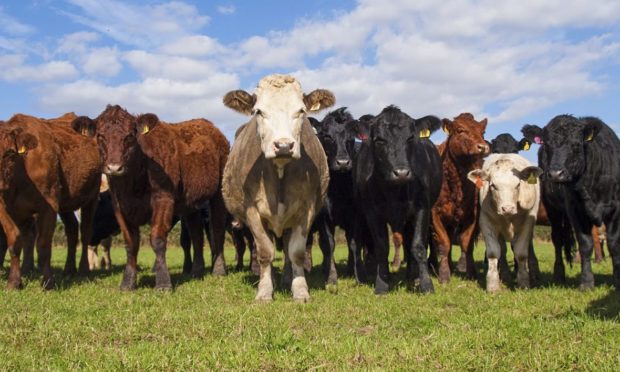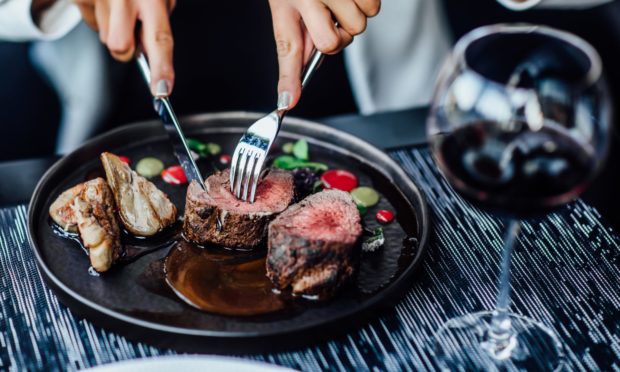The price paid to Scottish farmers and crofters for prime cattle is up around 8.5% on the year, according to new figures.
The latest market analysis by red meat levy body Quality Meat Scotland (QMS) reveals farmgate prices for prime cattle are also up 3% from the recent low point at the start of June.
Prime cattle prices at Aberdeen and Northern Marts’ Thainstone Centre, near Inverurie, were up on the year on Thursday August 12.
Prime bullocks averaged 240p per kg – up from 221.9p on August 13, 2020 – and prime heifers averaged 228.9p, which is up from 221.4p per kg at the same sale the year before.
It was a similar picture for prime heifers at Lawrie and Symington’s Forfar Mart on Wednesday August 11 when they averaged 264p per kg – up from 239p per kg on August 12, 2020.
QMS chief economist, Stuart Ashworth, said the increased prices were driven by reduced slaughter numbers – both as a result of reduced cattle numbers and disruptions at processing plants due to Covid-19 self-isolation rules.
He said this, combined with a slight fall in carcase weights, resulted in UK beef production in May and June being down by more than 3% compared to the same two-month period in 2020.
A reduction in imports of beef, along with a recovery in the export market for UK beef, also contributed to the overall tightening of supplies with the volume of beef on the UK market during April and May 1.5% lower than in 2020.
Mr Ashworth said the relaxation of Covid-19 restrictions was also impacting the market for beef and the value of a carcase to the abattoir operator or butcher.
“Analysis by market data company Urner Barry show rising prices over the past couple of months for those beef cuts that are most attractive to restaurants for example striploins, fillets and rib roasts,” added Mr Ashworth.
“In contrast lower valued cuts suitable for mincing and dicing have seen little movement in wholesale price over the past quarter. Retail prices are showing similar patterns with mince and diced products retailing at a lower price than twelve months ago but roasts and sirloin steaks seeing some modest increase.”
Looking forward, Mr Ashworth said indications from British Cattle Movement Service (BCMS) data suggest the number of slaughter cattle over 18 months old on British holdings is smaller than 12 months ago.
“Consequently the supply of cattle to abattoirs will remain tight in the short term helping to underpin prices,” he added.

